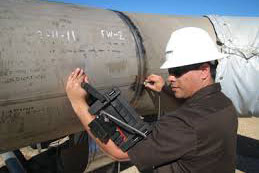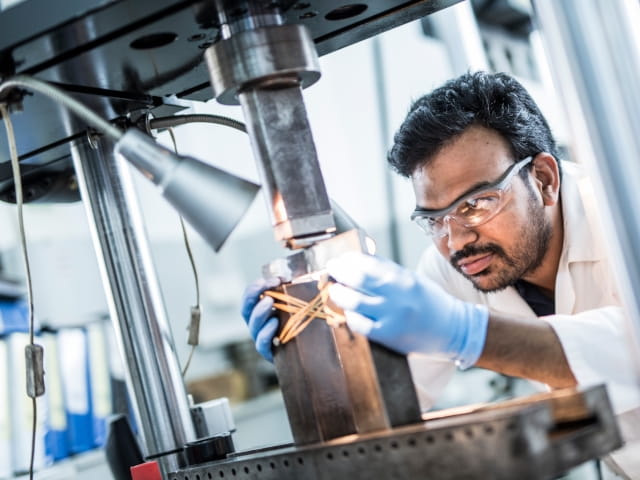Optimize Your Welding Quality with Expert Inspection Services in Gilbert Arizona
A Comprehensive Guide to Welding Evaluation: Comprehending Specifications, Techniques, and Finest Practices for Quality Control

Welding inspection plays a crucial role in guaranteeing the structural integrity and safety of welded elements, requiring a detailed understanding of sector criteria such as those developed by AWS and ASME. As we check out these vital aspects, it comes to be noticeable that the ramifications of welding assessment prolong far beyond conformity, welcoming a better exam of exactly how these processes shape sector criteria and methods.
Significance of Welding Assessment
Welding inspection plays a crucial role in guaranteeing the stability and security of welded structures. It is an important procedure that validates that welds satisfy predefined specifications, which is vital in various industries, including building and construction, vehicle, and aerospace. By conducting detailed assessments, potential issues such as fractures, insufficient combination, and porosity can be recognized early, avoiding catastrophic failings that could result in mishaps or pricey repair work.
The relevance of welding evaluation expands beyond simple conformity with regulations; it additionally fosters trust fund with stakeholders. Clients and regulative bodies anticipate assurance that the structures they depend on are constructed to withstand operational stress and anxieties. Efficient welding examination practices add to long-term toughness and efficiency of the frameworks, inevitably leading to reduced maintenance expenses.
Additionally, welding evaluation advertises a society of top quality within companies, urging adherence to ideal practices and continuous enhancement. By incorporating examination procedures right into the welding process, business can improve their online reputation and develop themselves as leaders in top quality guarantee. In conclusion, the relevance of welding evaluation hinges on its ability to safeguard lives, ensure structural dependability, and maintain market standards, making it an important aspect of welding operations.
Trick Market Criteria
Making certain compliance with key sector requirements is essential for maintaining the quality and safety and security of bonded frameworks. Various companies establish these criteria to promote best techniques in welding and inspection. Amongst the most identified are the American Welding Society (AWS) and the American Culture of Mechanical Engineers (ASME), which provide in-depth guidelines and requirements for welding procedures and examination standards.
AWS requirements, such as AWS D1.1 for structural welding, outline demands for products, design, and testing to ensure the honesty of welds. Similarly, ASME codes, consisting of ASME Section IX, regulate the credentials of welders and welding procedures, making certain consistent top quality in commercial applications. Globally, the ISO 3834 basic highlights top quality requirements for fusion welding, supplying a structure for organizations to show conformity with international best practices.
Compliance with these requirements not just enhances the integrity of bonded structures however likewise minimizes threats associated with structural failures. Adherence to market requirements is commonly a requirement for regulative approvals and can considerably influence task requirements. Eventually, understanding and implementing these crucial criteria are vital for efficient welding assessment and top quality guarantee.
Examination Techniques Review
Reliable welding assessment depends on a variety of techniques created to assess the top quality and honesty of welds. These methods can be broadly categorized into non-destructive and damaging screening (NDT) techniques. Non-destructive screening strategies, which are commonly preferred in the sector, permit the examination of welds without compromising the honesty of the material.
Amongst the most frequently utilized NDT methods are aesthetic evaluation, ultrasonic screening, radiographic screening, and magnetic fragment screening. Visual assessment is typically the initial step in the assessment process, making it possible for inspectors to determine surface blemishes and examine weld bead profiles. Ultrasonic screening utilizes high-frequency audio waves to detect interior flaws and measure the thickness of welds. Radiographic testing includes using X-ray or gamma-ray imaging to reveal inner problems, while magnetic bit testing is efficient for finding surface area and near-surface gaps in ferromagnetic materials.
Each method has its own benefits and constraints, making it necessary for assessors to select the most proper approach based upon the specific demands of the project, you can look here the products involved, and the criticality of the welds being checked. This mindful choice upholds and guarantees comprehensive analyses safety and high quality requirements in welding operations.

Typical Problems and Their Ramifications
An extensive understanding of typical problems in welds is essential for preserving structural integrity and safety in welded constructions. Welding issues can significantly compromise the mechanical residential properties of the joint, bring about failings that could endanger both personnel and devices.
Usual flaws include porosity, which shows up as little gas pockets caught in the weld steel, damaging the general structure. Cracking is another widespread concern, commonly resulting from quick cooling or improper joint style, causing tension focus that can cause devastating failures. Insufficient combination occurs when the weld metal falls short to effectively bond with the base material, developing powerlessness that may bring about splitting up under lots.
Other significant defects consist of undercutting, where the weld grain deteriorates the base steel, and slag inclusions, which can impede the weld's strength. Each of these issues has specific effects; for example, porosity can decrease ductility, while fracturing straight influences tensile stamina. Recognizing and understanding these problems throughout evaluation is necessary for implementing rehabilitative actions and ensuring conformity with market criteria, eventually protecting the architectural honesty of welded settings up.
Best Practices for Top Quality Guarantee
Executing finest practices for quality control in welding procedures is vital for accomplishing ideal outcomes and decreasing flaws. One vital technique is the facility of clear welding procedures that stick to industry criteria and requirements. These treatments should include in-depth directions pertaining to material choice, joint prep work, and welding techniques to guarantee uniformity and quality.
Regular training and certification of welding employees are additionally vital. Proficient welders who recognize the importance of quality control are much more likely to this contact form create sound welds. Additionally, executing a durable examination program, consisting of both visual and non-destructive screening (NDT), can help determine flaws early at the same time, allowing for timely rehabilitative actions.
Documentation plays a crucial role in top quality assurance. Preserving precise records of welding repair services, parameters, and examinations ensures traceability and accountability. Additionally, using sophisticated modern technologies such as automated welding equipments can boost precision and minimize the possibility find more information for human error - Welding Inspection Gilbert Arizona.
Lastly, promoting a society of high quality within the organization motivates staff members to prioritize high quality in their job. By sticking to these ideal methods, companies can enhance the stability of their welding processes, inevitably bring about enhanced item top quality and minimized expenses related to rework and repairs.

Verdict
In conclusion, welding evaluation plays a vital role in guaranteeing the integrity and security of welded structures. By applying finest practices, companies can enhance integrity, decrease maintenance expenses, and cultivate count on amongst clients, inevitably adding to successful welding operations.
Additionally, welding evaluation advertises a society of quality within organizations, motivating adherence to best practices and continuous enhancement. In conclusion, the importance of welding assessment exists in its capability to secure lives, make certain architectural dependability, and maintain market standards, making it an essential element of welding procedures.
Among the most identified are the American Welding Culture (AWS) and the American Culture of Mechanical Engineers (ASME), which provide comprehensive standards and specs for welding processes and examination criteria.
Inevitably, understanding and applying these crucial criteria are vital for reliable welding evaluation and quality assurance.
Efficient welding inspection depends on a range of techniques created to assess the high quality and honesty of welds. - Welding Inspection Gilbert Arizona